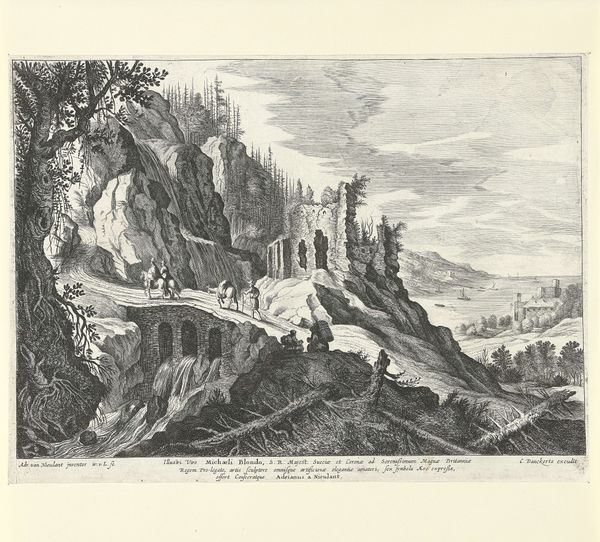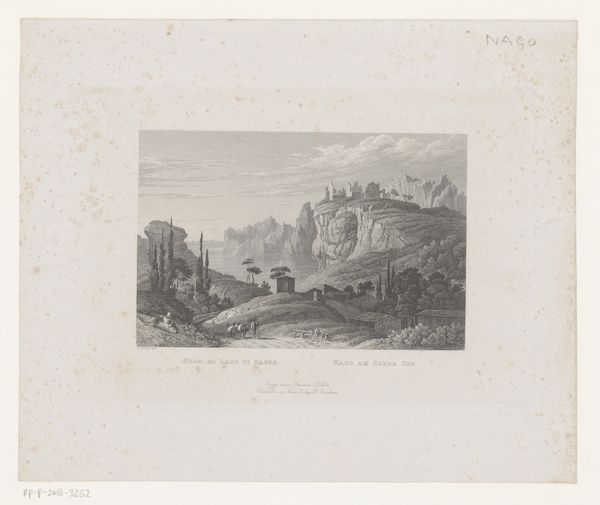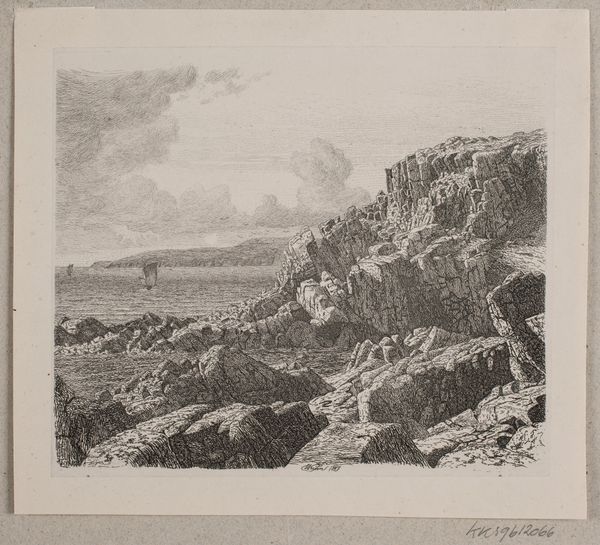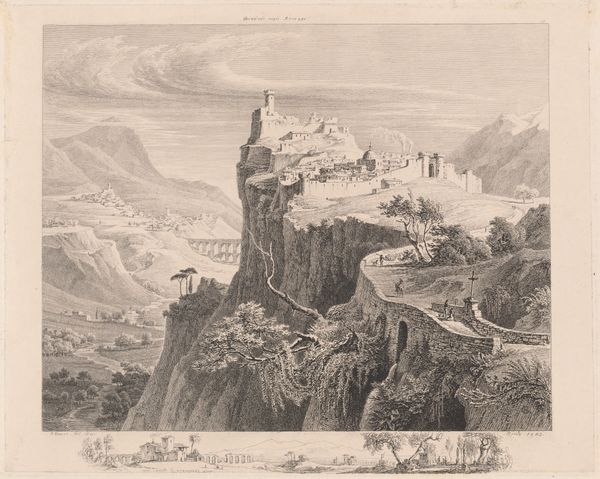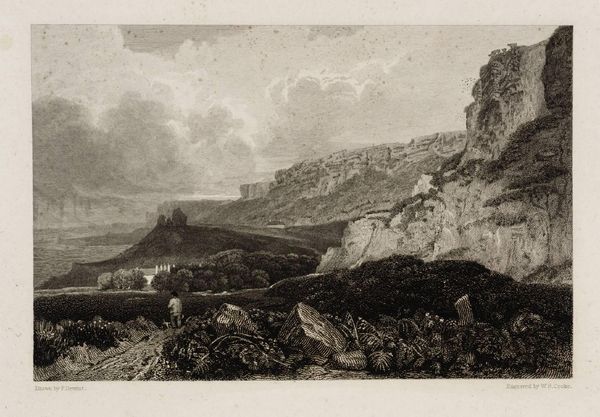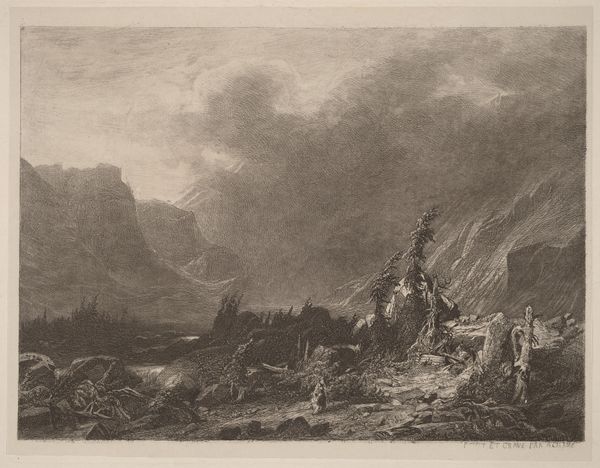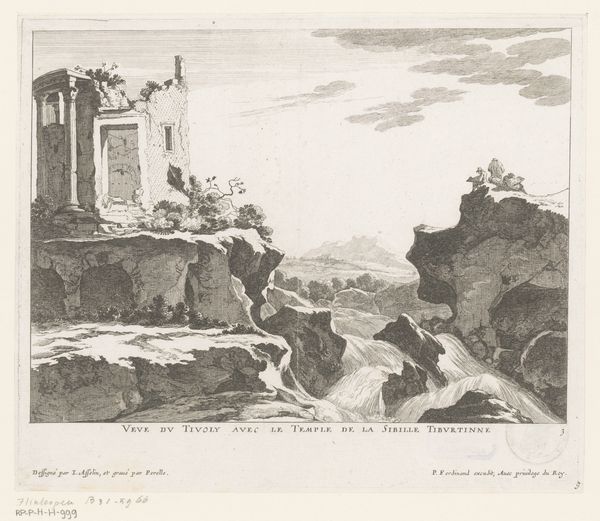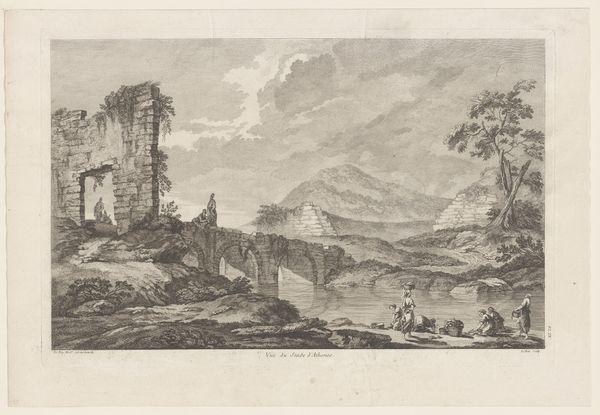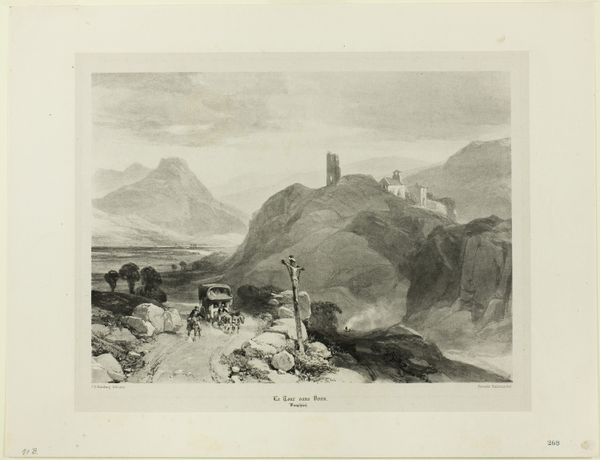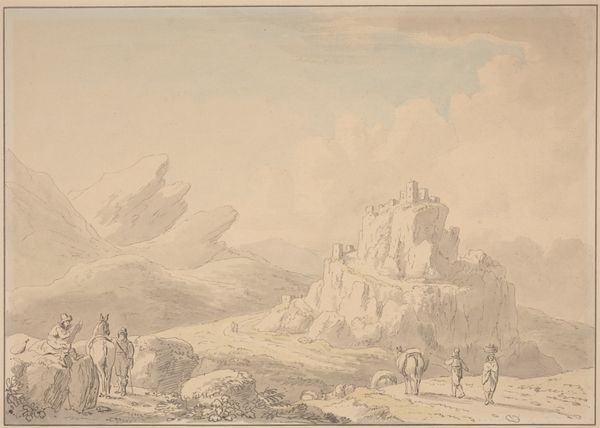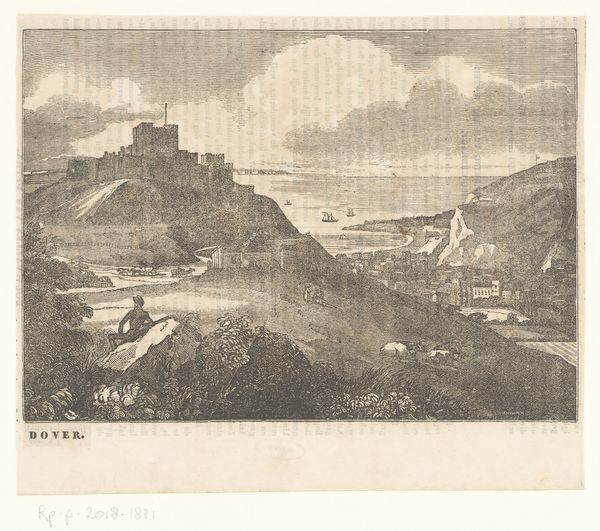
drawing, print
#
drawing
# print
#
landscape
#
romanticism
Dimensions: Sheet: 21 3/16 × 14 5/16 in. (53.8 × 36.3 cm) Image: 10 1/4 × 13 7/16 in. (26 × 34.2 cm)
Copyright: Public Domain
Curator: Here we have Eugène Isabey's "Church of Saint-Necataire," a print dating to 1831. Editor: My initial impression is of profound stillness, punctuated by that lone rider near the center—the greyscale palette amplifies this sense of isolated majesty. Curator: Indeed, Isabey employs lithography to superb effect here. Observe how he manipulates light and shadow, a hallmark of Romanticism. The sharp contrast emphasizes the church's imposing structure and its position overlooking the ravine. Note too the skeletal bridge dominating the foreground; its rough geometry leads us back to the imposing building at the hilltop, drawing the viewer's eye around the work’s pictorial space. Editor: Right, that contrast really speaks to broader social tensions of the era, particularly around faith and the existing social structure after the Enlightenment. That seemingly isolated figure riding up the hill evokes themes of access and power. Were the Church's resources actually serving its community—especially those down in the figurative and literal valley—or simply perched imposingly upon it? Curator: A plausible interpretation. We should also appreciate the composition itself—how Isabey uses varied textures to enrich the visual experience, drawing out the sublime out of what otherwise seems like fairly standard landscape. Editor: And thinking about access to landscape at this time; the growing bourgeoisie sought respite from urban life, while land remained deeply tied to entrenched aristocratic power. Was Isabey subtly critiquing that socio-political structure by depicting the vastness and, frankly, emptiness? Curator: It could very well be so. As an artwork of the Romantic period, this print deftly weaves aesthetic and historical threads. Thank you for these incisive considerations, reminding us how the gaze changes our reading of the artwork itself. Editor: Thank you. Hopefully we've given visitors another way to interpret how artworks mediate power through land.
Comments
No comments
Be the first to comment and join the conversation on the ultimate creative platform.
